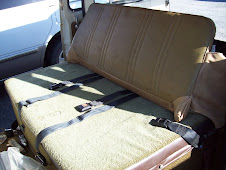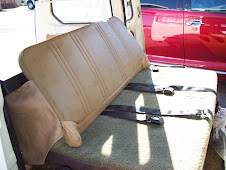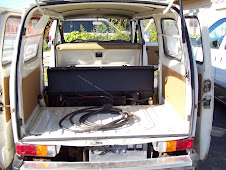This was my 1979 Jet Industries ElectraVan. I sold it in October of 2015.
This is an all-electric vehicle; it is not a hybrid or a plug-in hybrid. It plugs into and charges from a standard household 110V outlet.
The body is a Subaru 600, but Jet Industries in Austin, Texas installed the electrical components and sold it as a new, zero-mile electric vehicle in 1979. It’s not a neighborhood electric vehicle (NEV); it can be legally driven on the highway. (I rarely drive mine on the freeway as it does not maintain adequate freeway speeds. I stick to roads with a 45 or 50 mph speed limit.) Best of all, it produces zero emissions!
Note: There are no tax incentives for the purchase of used electric vehicles.
It's not easy being green, but it is the right thing to do. I do it to honor God as He has made us to be stewards of His creation.
Vehicle Specifications & Performance:
Seats: 5 Curb Weight: 2351 lbs. Gross Vehicle Weight: 3250 lbs. Height: 5’3” Length: 10’ Width: 4’5”
Transmission: Manual, 4-speed.
Top Speed: 50 mph (65+ mph going downhill, but velocity decreases going uphill). Not a good vehicle for hilly areas.
Range: 20 miles +/-, depending on speed, load, and condition of the battery pack. Note: The fewer miles you drive before charging, the longer the batteries will last. Range is best during warmer weather and lower during cold weather. Range will be lower at first when batteries are new. There will be a break-in period of a number of weeks.
Wheels: 10” split rims; could be upgraded to 12”.
Note: The original 8 gallon diesel fuel tank was used for powering the heater/defroster. I removed the tank from mine and prefer to avoid the use of fuel altogether. An electric heater could be installed, thus maintaining the all-electric, zero emissions status. I got through this winter just fine here in Santa Cruz County without a heater or defroster.
Electrical System Specifications
System Voltage: 102VDC. It uses 17 six-volt flooded deep-cycle batteries which cost about $100 each -- more for higher quality brands -- and will last 4 to 5 years, depending on use (regular charging; not overextending the range) and regular maintenance (adding distilled water as needed; keeping the connections tightened).
Motor: General Electric, 40 horsepower.
Controller: General Electric EV-1 (known as the “GE Growler” as it is far from silent; more modern controllers run on a frequency that the human ear cannot detect, so EV’s are usually silent; the upside is that the noise produced by this controller actually serves as a safety feature because people and animals can hear us coming, an especially important consideration for the visually impaired; people comment that it sounds like my van is playing a cello. The controller could be replaced with one that is silent and would increase acceleration, speed, and range
(Price was, when I checked years ago, $1975 plus CA sales tax and $20 shipping: electroauto.com/catalog/price-pts.shtml#dcdrive model number 1231).
Charger: 110V/220V, uses standard household plugs; charges in 2 to 10 hours, depending on state of discharge. Charging costs pennies on the dollar compared to gasoline. I have solar panels on my home, so I like to say that I run my car on sunshine!
DC/DC Converter: None; the charger charges a separate 12V battery for lights and accessories.
It seats 5.
Wednesday, March 25, 2009
Subscribe to:
Posts (Atom)



